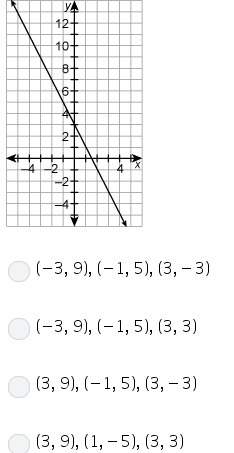The formula for compound interest is A=P(1 + h)", where n is the
number
of times interest is...

Mathematics, 11.05.2021 22:20 crystrow9p6qc7n
The formula for compound interest is A=P(1 + h)", where n is the
number
of times interest is compounded per year. Kai invests $5000 in
an account that pays annual interest at a rate of 4%, compounded
monthly
How much money will be in the account after 6 years?

Answers: 2


Other questions on the subject: Mathematics

Mathematics, 21.06.2019 14:30, gabbypittman20
Shania's test scores in 8 subjects were 88, 91, 85, 74, 69, 72, 80, and 87. shania found the middle number of her scores. which type of measure did she find?
Answers: 1

Mathematics, 21.06.2019 14:30, htorres2p8urw0
6.(q^9)^2 a. 2q^18 b. q^18 c. q^81 d. q^11 7.(6q^6)^-4 a. 6q^1296 b. 1296q^2 c. 1/1296q^24 d. 6q^-24 8. what is the value of 12x^-3 y^-1 for x = -1 and y = 5? a. -12/5 b.-10 c.-0 d.5/12 9. (y^-5)^10y^10 a. y^-60 b. y^60 c. y^-150 d. y^150 find the simplified form of each expression. 10. (4/7^5)^2 a.8/14^10 b.16/49^25 c.16/49y^10 d.8/14y^25 11. determine if the number 3.43 times 10^-6 is written in scientific notation. if not, explain. a. yes; the number is written scientific notation. b. no; the first factor is not a number between 1 and 10. c. no; it is not written as a number times a power of 10
Answers: 3

Mathematics, 21.06.2019 17:00, bhebert6057
Cameron indoor stadium at duke university is one of the most revered sites in all of college basketball, as well as in all of sports period. duke’s men’s and women’s basketball programs have attained quite a few wins in the building over the last seventy years. cameron indoor stadium is capable of seating 9,460 people. for each game, the amount of money that the duke blue devils’ athletic program brings in as revenue is a function of the number of people in attendance. if each ticket costs $45.50, find the domain and range of this function.
Answers: 1
You know the right answer?
Questions in other subjects:













